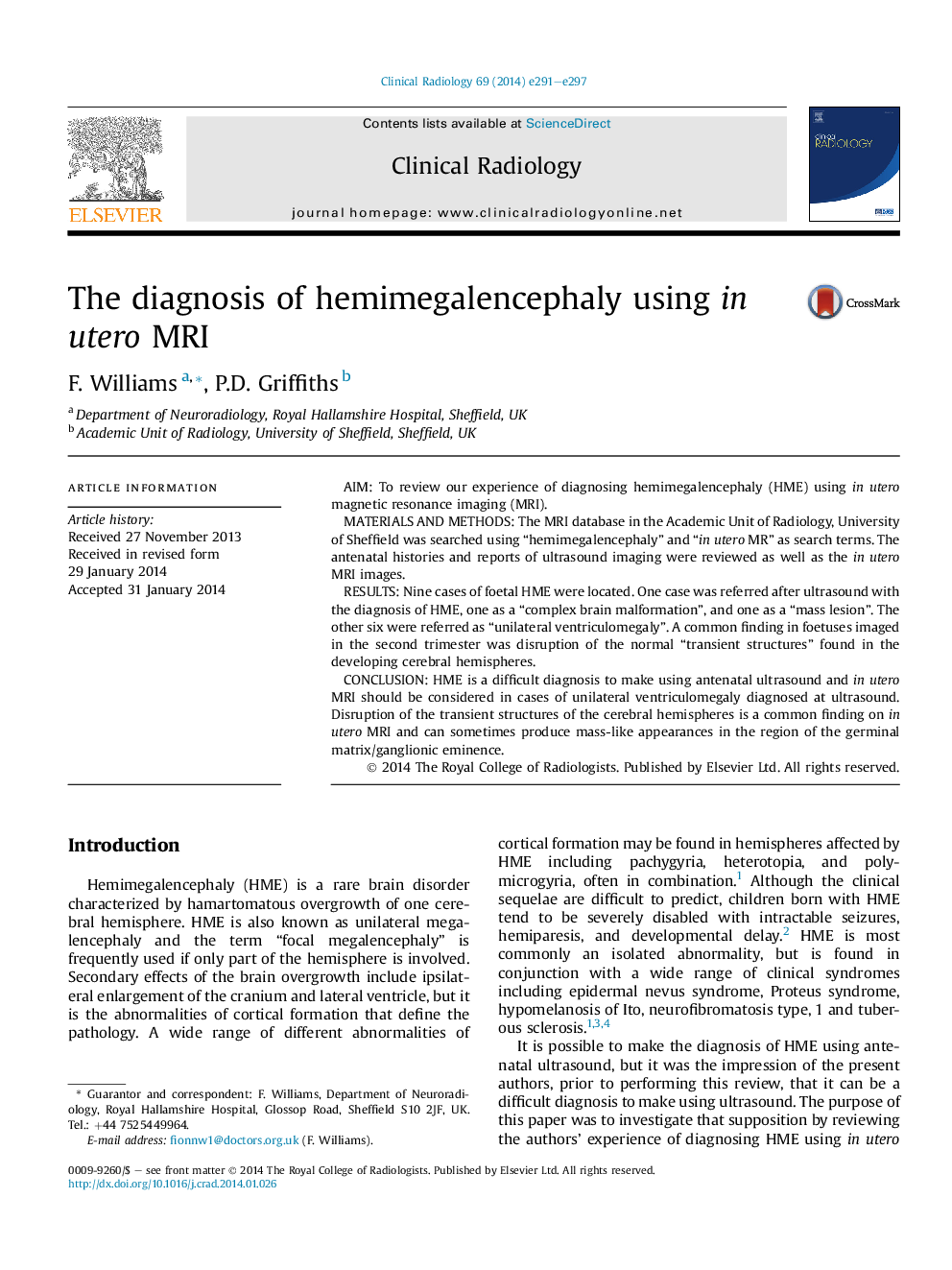| Article ID | Journal | Published Year | Pages | File Type |
|---|---|---|---|---|
| 3981752 | Clinical Radiology | 2014 | 7 Pages |
•We discuss the embryology of hemimegalencephaly.•We discuss the role of iuMR in diagnosis of HME.•We present 8 cases of HME diagnosed on iuMR.•We compare ultrasound to MRI.
AimTo review our experience of diagnosing hemimegalencephaly (HME) using in utero magnetic resonance imaging (MRI).Materials and methodsThe MRI database in the Academic Unit of Radiology, University of Sheffield was searched using “hemimegalencephaly” and “in utero MR” as search terms. The antenatal histories and reports of ultrasound imaging were reviewed as well as the in utero MRI images.ResultsNine cases of foetal HME were located. One case was referred after ultrasound with the diagnosis of HME, one as a “complex brain malformation”, and one as a “mass lesion”. The other six were referred as “unilateral ventriculomegaly”. A common finding in foetuses imaged in the second trimester was disruption of the normal “transient structures” found in the developing cerebral hemispheres.ConclusionHME is a difficult diagnosis to make using antenatal ultrasound and in utero MRI should be considered in cases of unilateral ventriculomegaly diagnosed at ultrasound. Disruption of the transient structures of the cerebral hemispheres is a common finding on in utero MRI and can sometimes produce mass-like appearances in the region of the germinal matrix/ganglionic eminence.
